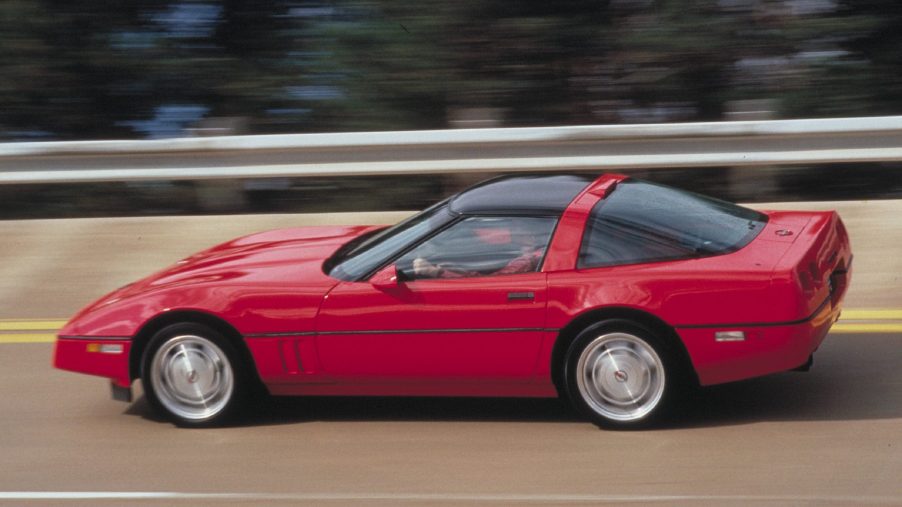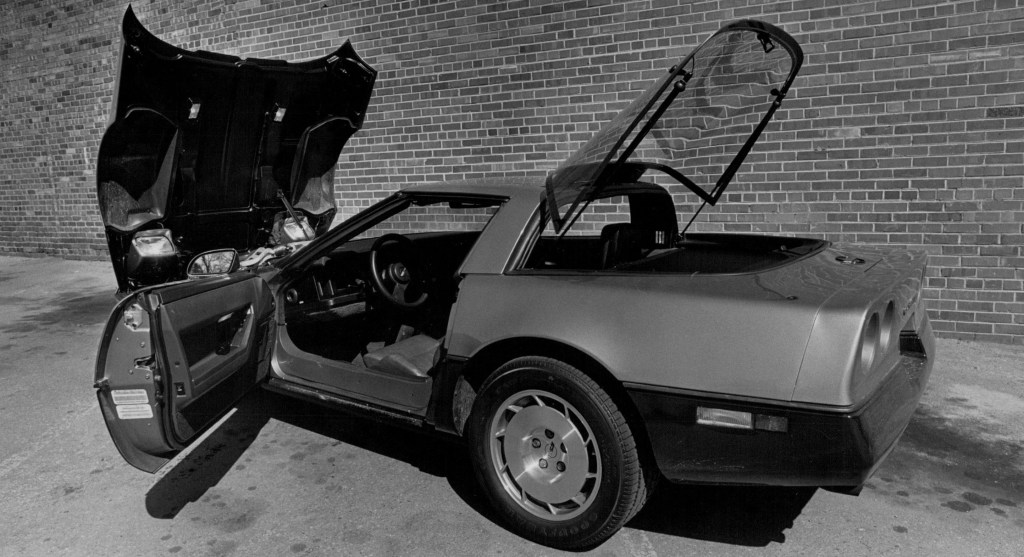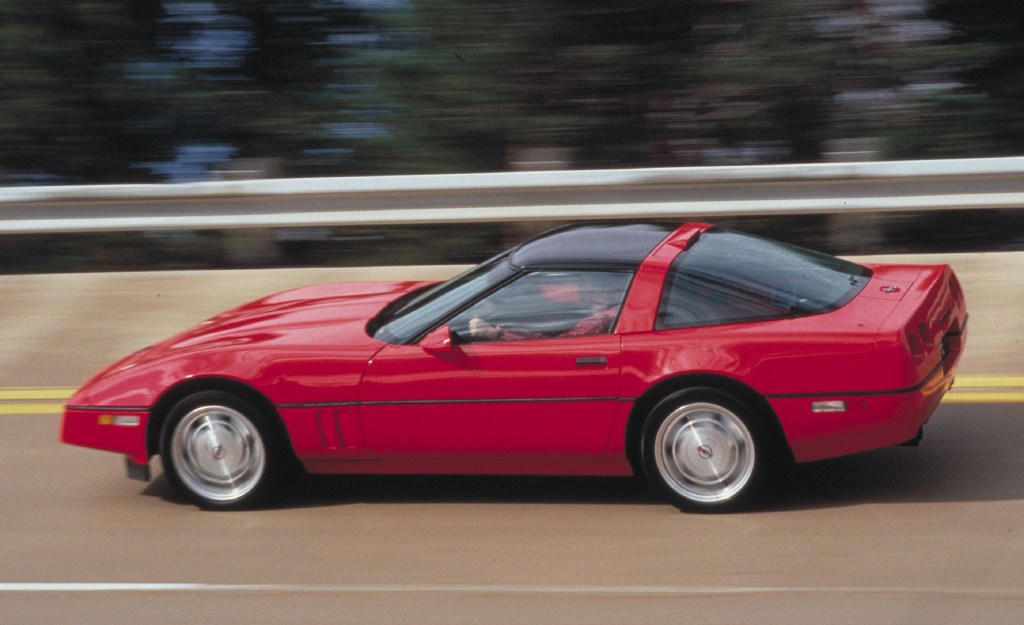
The C4 Corvette ZR1 Was More Insane Than You Remember
1990-1995 Chevrolet C4 Corvette ZR1 article highlights:
- The 1990 ZR-1 gave the C4 Corvette truly world-class performance
- With a unique 5.7-liter V8 and suspension designed by Lotus, plus numerous other upgrades, the C4 Corvette ZR1 was faster and sharper than the contemporary Porsche 911 Turbo
- It was almost twice as expensive as the regular C4 Corvette, but today the ZR1 is significantly more affordable
Though only Jay Leno has really gotten a chance to drive it, the upcoming Corvette Z06 already has the makings of a solid supercar. But as incredible as the flat-plane-crank mid-engine Corvette is, it owes its existence to a history of ‘Vette development. And while the Z06 moniker has long stood for high performance, there is a higher trim. A trim that originated on a car that genuinely shocked the supercar world: the C4 Corvette ZR1.
Even before the ZR1, the C4 Corvette set a new ‘Vette benchmark—but it wasn’t high enough

By the late 1980s, cars like the Buick GNX were helping American OEMs rise from the Malaise Era performance slump. The Corvette was on the rise, too: after 15 years on the market, the C4 finally replaced the C3 in 1984. But this wasn’t just a simple update. Since the C3’s bones dated back to the ‘60s, the new ‘Vette was a clean-sheet design, Hagerty explains. And it came with some interesting design requirements.
To improve handling, the C4 Corvette got a new chassis, all-aluminum suspension components, and massive (for the time) 16” tires. It also had the steepest windshield rake ever seen on a production car, both for style and aerodynamics. And its radiator was angled back, rather than straight on. But that wasn’t just for better cooling: it was also for fooling the cops.
Like the C3, the C4 Corvette had fiberglass body panels. Hence, the first thing a cop’s radar gun would see is its metal radiator. So, to minimize its frontal area, the Corvette engineers set it at an angle. That way, rather than ‘seeing’ your C4 at 3000 feet, the radar picked you up at 1500 feet. And this wasn’t just a happy accident: this was a genuine internal GM development target, Hagerty says.
Unfortunately, while its handling was sharper than before, the C4 Corvette had some flaws. Besides its interior issues—which was a Corvette problem up until the C8—the C4 wasn’t very rigid. Also, it debuted with the C3’s 205-hp V8. Plus, even though the 1986 model rocked a 298-hp V8, its old four-speed manual limited its performance. Finally, by 1989, the sports car and supercar world had a new upstart rival: the Acura NSX.
A Lotus-designed engine is just the peak of the C4 Corvette ZR1’s insane performance iceberg

To solve the rigidity issues, Chevrolet upgraded the Corvette’s suspension in 1985 and fitted a ZF six-speed manual and bigger tires in 1989. But it still needed more power. The Corvette team tried turbocharged V6s, a la the GMC Syclone, as well as twin-turbo V8s. That last idea gave the C4 over 400 hp, but no contemporary GM transmission could handle the torque. Also, in a mirror of an incident with the 2019 ZR1, a GM executive spun the test mule off the road.
Luckily, GM had a (sort-of) in-house solution. It owned British brand Lotus, which at the time was developing a new quad-cam V8 for its Etna show car. The V8 was powerful enough, but it wouldn’t fit into the C4’s engine bay due to construction issues. Instead, Lotus developed a brand-new V8 that shared no parts with any other GM V8. This was the all-aluminum 5.7-liter ‘LT5’ V8 and it dropped into the world in 1990 in the C4 Corvette ZR1. And until the upcoming C8 Z06, it was the only dual-overhead-cam Corvette engine.
However, there’s more to the C4 Corvette ZR1 and its engine than just the cams. To make it efficient at low RPMs and powerful at high ones, Lotus gave the LT5 two fuel injectors per cylinder. Only one operated at low revs, while the second one kicked in above 3500 RPM or so, Hagerty says. Also, those 16 injectors are matched by 16 intake runners, half of which are closed at low RPM. If this sounds like Honda’s famous VTEC, that’s because it kind of is. Plus, keep in mind that Lotus was designing this V8 at the same time as Mercury Marine was building the factory to cast it.
But wait, there’s more. Lotus also designed the C4 Corvette ZR1’s adaptive Bilstein suspension, which was like the Porsche 959 supercar’s setup. The ZR1 also got 17” wheels and tires—huge for 1990—and a wider rear body. Also, it got an upgraded transmission, different axle ratio, upgraded brakes, and tweaked anti-roll bars.
They called the C4 Corvette ZR1 ‘the King of the Hill’—and it more than earned its supercar crown
| 1990-1995 Chevrolet C4 Corvette ZR-1 | |
| Engine | 5.7-liter ‘LT5’ V8 |
| Horsepower | 375 hp (1990-1992) 405 hp (1993-1995) |
| Torque | 370 lb-ft (1990-1992) 385 lb-ft (1993-1995) |
| Transmission | Six-speed manual |
| Curb weight | 3440 lbs (1990 model, Car and Driver) |
| 0-60 mph time | 4.5 seconds (Car and Driver) |
| 5-60 mph time | 5.3 seconds (Car and Driver) |
Thanks to the extra power and revised transmission, the C4 Corvette ZR1 could go 180 mph. In 1990, that was tremendously fast; supercar fast. And speaking of supercars, that sort-of-VTEC system mentioned earlier? To access the high-power mode, you had to turn a special second key while the car was running. Yup, just like in a Bugatti Veyron.
With its newfound power, the C4 Corvette ZR1 set about shattering records. It broke a 50-year 24-hour endurance speed record that the specially-designed Mercedes C111 failed to match. And it forced Car and Driver to revise its 0-60 mph testing. That’s because, while the contemporary 964 Porsche 911 Turbo could beat the ZR1 from 0-60 with an abusive launch, it couldn’t match the ‘Vette IRL. Hence, the 5-60 mph ‘real world’ test was created.
Also, the C4 Corvette ZR1 wasn’t just quicker than the 964. It braked better, cornered faster, and was more fuel-efficient. True, its interior wasn’t as good, Car and Driver and Hagerty note. But as fast as the 911 Turbo was, the ZR1 was simply faster.
However, the ‘King of the Hill,’ as it came to be called, could’ve been even faster. Although Lotus tuned the LT5 up to 405 from 375 hp in 1993, it had plans to make a 475-hp version. Unfortunately, an economic recession, the ZR1’s already-high price tag, and improvements in the regular C4 Corvette’s pushrod V8 killed the upgrades and the LT5. However, Lotus’s work wasn’t a total loss, because the lessons learned in LT5 development paved the way for one of the best naturally-aspirated engines ever: the LS1 V8.
Expensive when new, the ‘Corvette from Hell’ is arguably underpriced today
In short, the C4 Corvette ZR1 is a genuine classic American supercar. But despite its performance figures, it didn’t sell well in-period.
For one, that’s because the ZR-1 Package almost doubled the Corvette’s sticker price. When it was new, the C4 ZR1 cost the equivalent of $127,600. Furthermore, because GM eventually gave regular C4s a widebody treatment, the ZR1 didn’t look any different from a normal Corvette. While that gave it a certain sleeper appeal, it didn’t help with sales.
However, if you’re interested in picking up a C4 ZR1, know that they’re more affordable than you might think. A good-to-excellent condition example usually goes for around $30K, Hagerty says, while even pristine ones typically don’t cost more than $50,000. You’d pay more for a nice non-Turbo 964 and still not go as fast.
Follow more updates from MotorBiscuit on our Facebook page.


